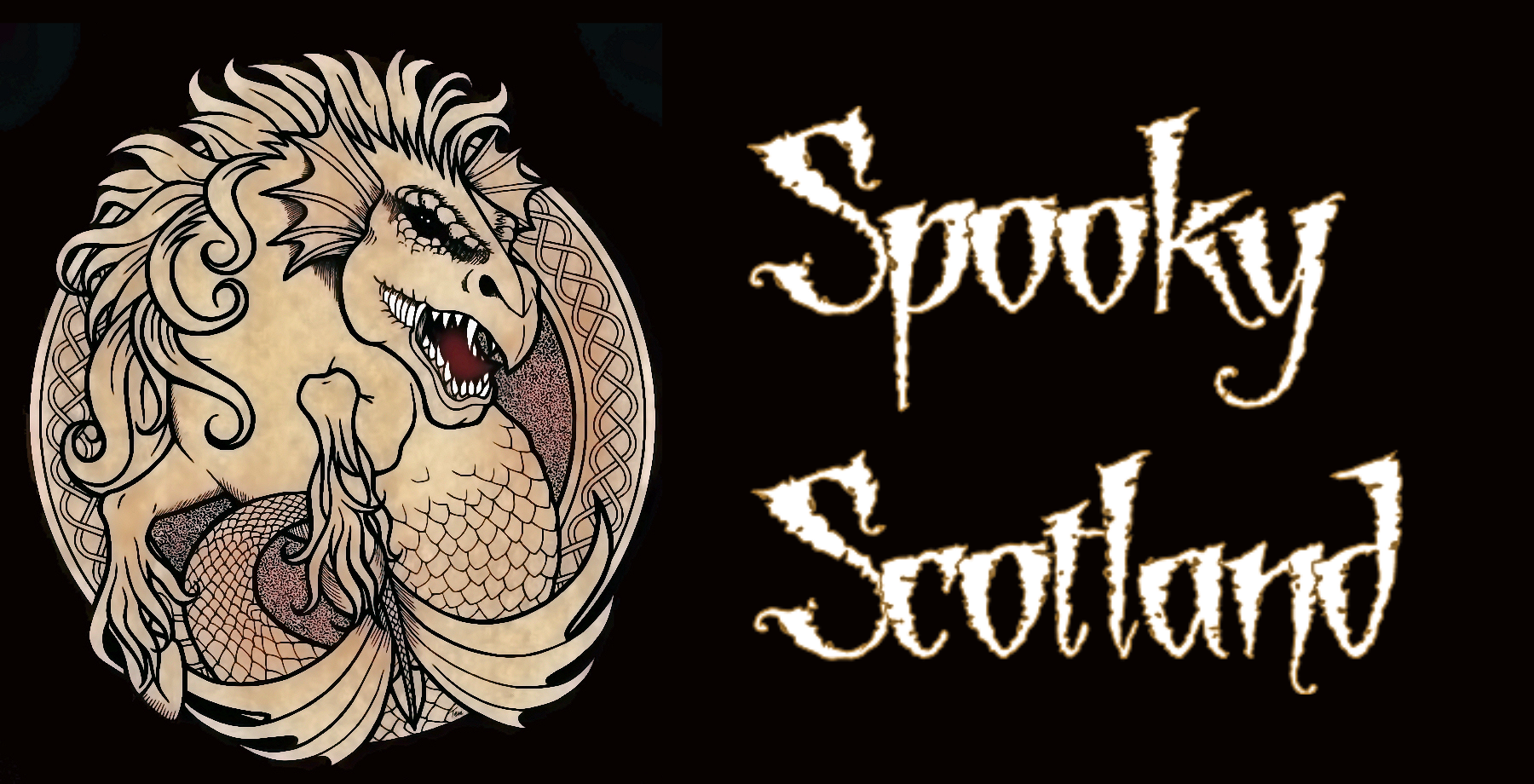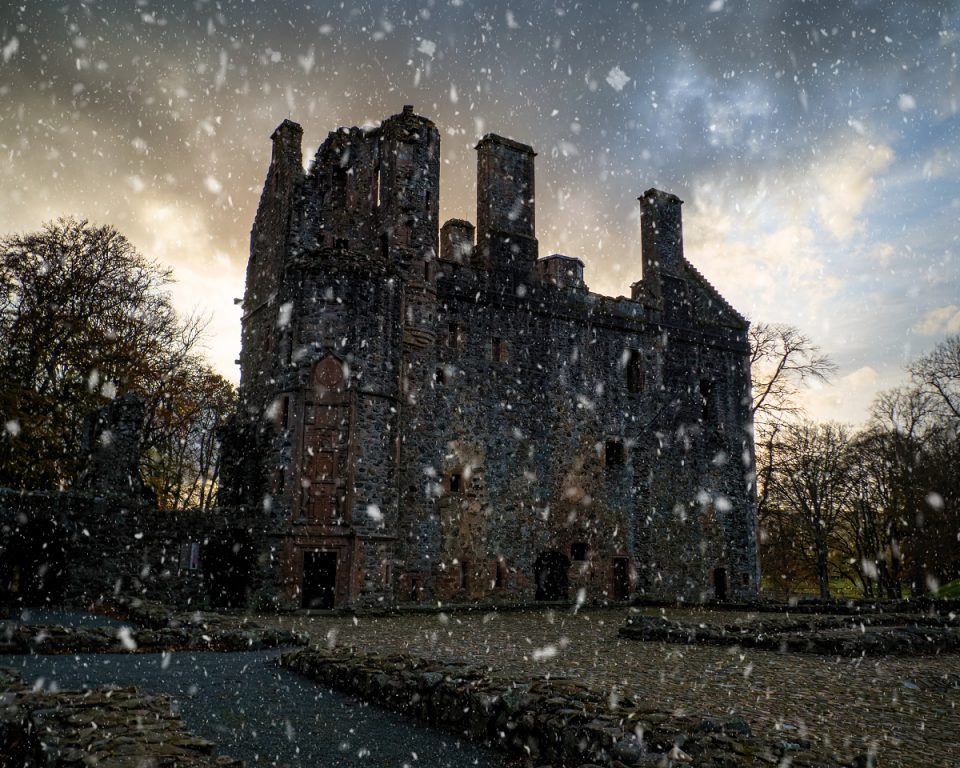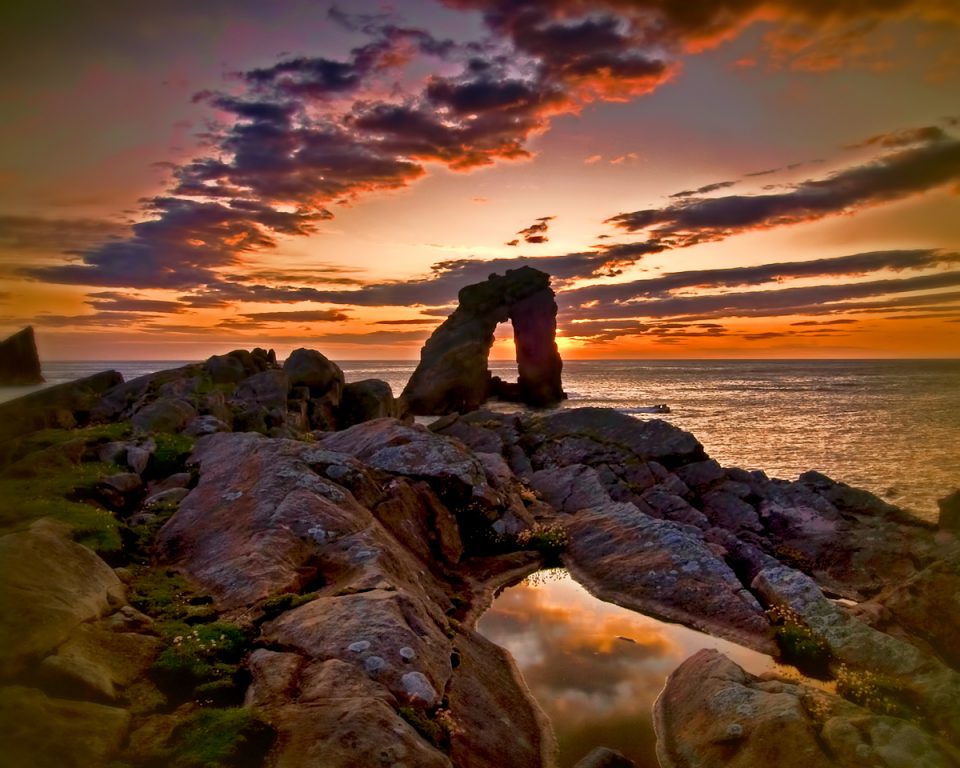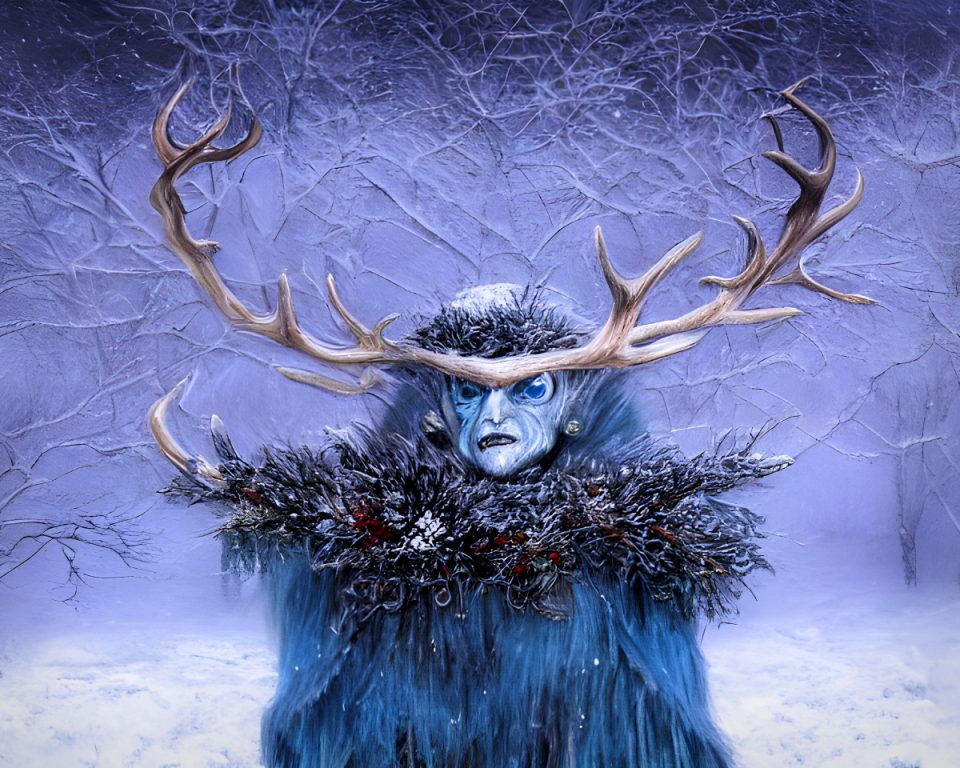Annually, the River Spey hosts an opening ceremony at the start of the Salmon Fishing season. The Spey Fishery Board oversees this ceremony, where a bottle of Speyside whisky, usually a single malt, is poured into the river to wish the salmon good health. A minister will bless the river, a piper will play, and shortbread, drams and hot drinks will be served.
Although this is a modern celebration, it could be a ritual straight out of our early ancestors’ playbook. A libation to the gods! A spiritual leader blessing the waters! A feast and music! Alas, no written records were kept by the pre-Christian inhabitants of Speyside. I am on a quest to find out if the Pictish peoples of Speyside worshipped a river goddess. I will be sifting through the myth associated with the Spey and other rivers to look for patterns and clues.
The Fastest River in Scotland
At 107 miles long, the River Spey is Scotland’s third longest river and holds the record for being its fastest! Beginning at Loch Spey, most of its catchment area is in the high peaks of the Cairngorm Mountains. Entering the Moray Firth at Speybay, the land on either side of the river mouth constitutes the largest vegetated shingle complex in Scotland.
The River Spey is biologically important. It is home to otters, lampreys and freshwater pearl mussels. Some of the last strands of the Ancient Caledonian Pine Forest are found on its banks. It is also economically important as one of the big four salmon rivers in Scotland. The clear water in the tiny, mountain streams that run into the Spey is the heart blood of the Speyside whisky industry. There are more distilleries concentrated in this section of Scotland compared with anywhere else in the world.
While the River Spey is renowned for its alcoholic spirits, beneath the dark, murky waters of the river, another spirit is said to exist.
The Spirit of the River Spey
The folklorist Lewis Spence recorded in his book ‘Minor Traditions of British Mythology’ that the Spey had a reputation for bloodthirstiness. He stated:
‘The demon which presided over it was nameless, the ominous pronoun ‘she’ denoting, as perhaps nothing else could, the fear and dislike this river inspired in the dwellers on its banks, that the Spey demanded at least one victim every year was proverbial.’
The reference to the River Spey as ‘she’ is important. It suggests that the river’s fearsome reputation may have its roots in an ancient tradition, when the waters were seen not as a threat, but as the domain of a powerful goddess whose memory lingers only in the place names we use and in the fading tales of times past.
Ancient Belief Systems in Scotland
In all the Celtic countries, there were many Celtic deities, both male and female, who continued to be honoured as guardians of sacred wells and special places, even after the arrival of Christianity. Like the gods themselves, these figures were often identified with birds or animals, appeared in threes, or were thought to lurk in the branches of ancient, sacred trees, many of which must have stood for centuries. However, compared to the other Celtic nations, Scotland sadly has very little native mythology that can be confidently dated to ancient times.
Among Gaelic speakers, Irish mythology is particularly influential, with heroes from the Fionn cycle appearing in Scottish stories and landscapes. Over time, layers of myth from different peoples have built up, leaving little early material to help us distinguish what is truly pre-Christian from what was added later. In some cases, we have names but little else to go on. The gods are more frequently portrayed as spirits or fairies than deities, who must be placated with milk to ensure their benevolence and safeguarding of cattle.
Ptolemy’s Map
One valuable source of information is Ptolemy’s map of Scotland. Ptolemy, a Greco-Roman mathematician, astronomer, and geographer, lived in Alexandria during the 2nd century CE. He is most renowned for his influential work, the Geographia, in which he compiled and mapped the known world using a system of coordinates.
Although the limited understanding of his era somewhat distorts Ptolemy’s map of Scotland, it is notable for its inclusion of ancient place names, many of which are thought to be derived from local deities and natural features. Among these, several river names appear to preserve the memory of Pagan River goddesses, reflecting the spiritual importance rivers held for the native peoples. Such names suggest that rivers were not only essential for survival, but were also venerated as divine beings, often personified as goddesses within local traditions. In this way, Ptolemy’s map provides a rare glimpse into the sacred landscape of ancient Scotland, offering a view of a time when the natural world and the divine were closely intertwined in the lives of its people.
Rivers named after Goddesses
Notable among the rivers recorded by Ptolemy is the Deva Ostia. We now know this as the River Dee that runs into the sea at Aberdeen. W.J. Watson states that:
“Deva, the Aberdeenshire Dee, is the feminine of deivos, Gaulish devos, a god, and was, of course, the name of the River Goddess.”
Watson declared that Aberdeen’s other great river, the Don, comes from Devona, which comes from the same root, devos, once again linking the river to a Goddess.
Similarly, Adamnán, who wrote the hagiography of Saint Columba, mentioned a river, Nigra Dea, ‘the Black Goddess’. The Divie, a burn in Moray which runs into the River Findhorn, has a similar meaning.
According to Donald Alexander Mackenzie:
Almost all the rivers of Scotland were abodes of goddesses, but about many of them, there are no surviving stories. The character of a goddess was suggested by that of a river. The goddess of the river Forth, for instance, was ” the deaf or soundless one “, because the Forth is a comparatively silent river; the goddess of the Clyde, on the other hand, was “the purifying one”, because the old people knew it as a river which scoured the country it passed through, and carried much mud and clay seaward when in flood. Many old stories have been lost, of course, those which remain are mere fragments of an ancient mythology.
Was the River Spey named after a Goddess?
On Ptolemy’s map, we find the River Spey indicated by the Tuesis Estuary. It is not until 1451 that it appears as the River Spey. One proposed meaning for the River Spey is ‘Hawthorn’ and is derived from Pictish. Others state that it comes from the old Gaelic Sceïd, ‘Vomit’. However, the river name does not indicate the identity of the Goddess of the River Spey. That leaves us turning to mythology to look for clues.
The Endless Combat: A Tale of the River Spey
Included in Donald A. Mackenzie’s seminal work ‘Wonder tales from Scottish Myth and Legend’ is the story ‘The Combat that Never Ends.’ In a myth from Speyside, it was said that two mountains stand over the Spey valley-one to the east, one to the west. On each lives a fairy king, both sons of the Cailleach Beira, Goddess of winter. The white fairy, famed for his archery, wields a silver bow and golden arrows, shooting one across the valley each day. The black fairy, dark as a raven with a red mark on his chest, has no weapon but can turn invisible, leaving only the red spot visible as he attacks with surprise and strength.
The white fairy’s joy is his bride, Face-of-Light, who wanders the mountains and valleys, her presence making the world brighter. The black fairy, alone and jealous, hides from the archer’s arrows and plots in secret.
Face-Of-Light Taken Captive
One quiet evening, as Face-of-Light gathers wildflowers near the black fairy’s mountain, he seizes his chance. He snatches her and drags her to his dark dungeon. The white fairy, bound to his mountain and unable to shoot another arrow until dawn, can only listen helplessly to her cries.
All night, the black fairy celebrates his victory, his wild dancing stirring winds through the valley, while Face-of-Light weeps in captivity. At dawn, the white fairy recovers, his tears falling as dew. He climbs his mountain, hears her moans, and prepares his bow. The black fairy taunts him, then vanishes, leaving only the red spot floating in the air.
Freeing Face-of-Light
The white fairy aims and fires his golden arrow. It strikes the red spot-the black fairy’s heart. With a shriek, the black fairy falls dead, his blood painting the eastern sky red, the golden arrow gleaming in the midst. Face-of-Light is freed, and her return brings light and joy to the land.
But as evening falls, Beira comes and revives her son with healing balm. The cycle begins anew-the endless struggle between darkness and light.
This tale, told in Strathspey, is the story of night and day. The black fairy is night, his red spot the dawn, the white fairy’s arrow the sunrise, and Face-of-Light the spirit of the river, bright by day, hidden by night.
Looking for Remnants of a Goddess of the River Spey in the Tale
We know from the writings of Adamnán that the pre-Christian Picts had a belief system like other Celtic societies, based on polytheism and animism. In other words, they believed in many gods and that these gods existed as the spirits of animals, plants, trees, stones, rivers, sky, sea, and land. In this sense, there wasn’t a Goddess of Rivers; the Goddess was the river itself. These beliefs would include stories that explained natural cycles, such as the passing of the seasons. In this story, it is used to explain the cycle between night and day.
It is likely that the fairy kings were once deities. It shows how older religious ideas have adapted, softened or hidden as Christianity spread. The presence of Face-of-Light as a personification of the river hints at animistic beliefs.
Day and Night Explanation at Loch Ness
Interestingly, the same tale is told in Strath Nairn, where there are two sons of a witch called Bean Gheur (the Sharp Wife or Woman). An Righ Ban, the White King, lives on Creag na Gobhar on the east of Strath Nairn and his brother An Righ Dubh, the Black King, lives on Carn na Freiceadan on the west. Here, the love interest is Gnais Aillidh (Bonnie Face). The story takes the same format with Bean Gheur representing one of the iterations of the Cailleach Beira.
Similarly, a folktale reminiscent of the tale of the two Fairy Kings on the River Spey is also spoken of around Loch Ness, where two giants, fooars, the sons of Beira, one loving day, one loving night, hurl white and black boulders across the water, trading blows as the sky shifts from light to dark and back again, their rivalry never ending.
Parallels with the Tale of Athfhinn
One of the tributaries of the River Spey is the River Avon (pronounced A’an). In Gaelic, the Avon is called Uisge-Athfhinn (ooshk AH-hin), which means ‘water of the very bright one’. Immediately, you can see a similarity Face-of-Light and the ‘water of the very bright one.’
Ath-Fhinn has a double meaning. It also means Fionn’s ford: a few miles downstream from Loch A’an, the source of the river, is Ath nam Fiann, the Ford of the Fianna. This connects the river to the folklore of Fionn MacCuimhill, a legendary hero from Gaelic mythology, whose name means ‘white’ or ‘bright’. He is the leader of the Fianna, a band of young roving hunter-warriors, as well as being a seer and poet. Fionn is said to have a magic thumb that bestows him with great wisdom, derived from the Salmon of Knowledge. He is the giant from folklore who created the Giant’s Causeway and got into an altercation with the Scottish giant, Benandonner. Many landscape features in Ireland and Scotland are named after the Fianna. Further down the Avon is a hillside named ‘Sròn nam Fiann’, the nose of the Fianna.
The Death of Athfhinn
However, the connection between the River Avon/Uisge-Athfhinn does not end there. According to local folklore, Athfhinn was Fionn’s wife. One day the couple were returning from a hunting trip when they came to cross the river. Alas, the river was in spate. Fionn was able to cross but when Athfhinn followed, she slipped and drowned. Fionn then renamed the river after her:
Chaidh mo bhean-sa bhàthadh
Ann an uisge bàn nan clachan sleamhainn;
On a chaidh mo bhean-sa bhàthadh,
Bheireamaid ‘Ath Fhinn’, air an abhainn.
My wife has been drowned
On the fair water of the slippery stones;
And since my wife has there been drowned,
Let us call the river ‘Ath Fhinn’.
Goddess Connection
It does not take a huge jump in imagination for Athfinn to have been the tutelary deity or guardian goddess of the river in earlier times. Stories like this often preserve the memory of how a human figure became woven into the landscape. They hint at an origin myth that explains how she came to embody the river itself.
Parallels with the River Ness
In another tale told by Donald A. Mackenzie, about Beira or the Cailleach, Goddess of Winter, explains how Loch Ness was formed. Beira had a well outside of Inverness. It was supposed to be covered from sunset to sunrise. She used a maid named Nessa to attend the well. One evening, Nessa was late getting to Well, which was overflowing and beginning to flood the glen. The maid fled.
Meanwhile, Beira, with her one eye, was watching from her lair on top of Ben Nevis. Beira cried, “You have neglected your duty. Now you will run forever and never leave the water.”
Immediately, the maid was changed into a river, and the resultant river and loch were named after her. Today, we know them as the River Ness and Loch Ness.
Once a year, on the anniversary of her transformation, Nessa arises from the water in her girl form and sings. Her heartbreaking song is said to rival the pipes and harps of the Otherworld in its beauty. Again, we return to the theme of a human becoming the spirit of a river and a possible origin story for a river goddess.
Other Origin Stories for Loch Ness
However, according to William Mackay’s 1893 account, there are two Scottish legends about how the loch got its name. The first tells of a druid named Daly, who enchanted a spring in a valley. ‘When not in use, cover the well with this stone,’ he warned. One day, a woman left it uncovered while rushing to save her child from a fire. The spring overflowed and flooded the valley, thus forming the loch. The people cried out, “Tha loch ‘nis ann!” (“There’s a loch now!”) This is said to have given rise to the name “Loch Nis”.
The second legend, part of the Ulster Cycle of Irish mythology, centres on Deirdre, a renowned Irish beauty, who fled to Scotland with her lover Naoise to escape King Conchobar MacNessa of Ulster. They married on the banks of the loch. Alas, Noaise was eventually killed by MacNessa. The loch, the river, and Inverness were then said to be named after Noais. Mackay points out that many local place names are linked to these tales, and that in the same legends, the river goddess Ness is said to be the mother of Conchobar MacNessa.
Saint Columba and the Loch Ness Monster
In his book, the ‘Life of Columba’, Adomnán recounted the following story. Columba was standing on the banks of the River Ness, which flows out of Loch Ness, contemplating the best way to cross to the other side. However, his thoughts were disrupted by a group of distraught Picts who were burying a friend who had been attacked by a massive ‘water beast’ while swimming in the river.
However, Columba was not about to be dissuaded from crossing the river. On his command, one of his companions, Brother Lugne Mocumin, jumped into the river. He began to swim across with the object of bringing back a coble which was moored on the opposite side.
The onlookers stared ‘stupefied with terror’ as the ferocious beast surfaced, its jaws wide open in anticipation of its next meal. It roared and headed towards the hapless Lugne. Meanwhile, Columba was nonplussed. Instead, he boldly stepped forward, making the sign of the cross. Invoking the name of the Lord, he commanded the beast, “Thou shalt go no further, nor touch the man; go back with all speed.”
Fearful, the monster fled. Lugne continued with his quest and soon returned with the boat. It is said that the monster has never attacked another human since that day.
Vilification of the Old Gods
It is said that in Hagiographies, the miracles were metaphorical rather than literal. Could it be that what we now call Nessie, the Loch Ness Monster, was once the spirit of the River? A River Goddess whose power was removed by the teachings of Saint Columba? It was a common practice among the Early Christians to either canonise or vilify pagan goddesses. Thus, we see Brìde becoming Saint Briget, whereas the Cailleach is reduced to the green-faced witch Hag of Halloween. Originally, the Cailleach is described as having blue skin. Interestingly, the Gaelic word for blue is ‘gorm’, but in certain contexts it also means green. Could Nessie be another example of the vilification of a Goddess?
Columba and the Well
The Folklorist scholar Anne Ross wrote:
‘When Columba was in Pictland he learnt of a well worshipped by the Picts as a god. This well was inhabited by an evil spirit and men believed in it and worshipped it. The saint went fearlessly to the spring. The Druids, whom he had often sent away from him, vanquished, and confounded, were delighted by this, thinking Columba would suffer like others ‘from the touch of that baleful water’, but the saint, first having washed his hands and invoked the name of Christ, drank of the water which he had blessed. And from that day on the demons departed from the water. Not only was it forbidden to do harm to anyone, but it now cured many diseases from which the people suffered.’
Well Location at Invermoriston
This well is said to be at Invermoriston, in the Great Glen. This is on the route Columba would have taken when visiting the Pictish King, Bridei. This well is also said to have been the source of Loch Ness. Could this be the same well that Nessa left open? The Hagiography condemns the Pagan worship of the well, but Columba purifies the well, allowing the Early Christians to return and worship at the well, this time in the name of the Christian God rather than their Goddesses from the past.
These stories show how the sacred landscape of the Highlands was reimagined as Christianity spread. Sites and spirits once central to local belief were not only forgotten but sometimes actively recast as dangerous or demonic. The river goddess became a monster, the holy well a battleground for faiths. Yet, even as the old beliefs were suppressed or transformed, their echoes remain, woven into the stories, the place names, and the enduring sense of mystery that still clings to the waters of the Ness.
A Return to the River Spey
Is it possible then that Face-of-Light is an anglicised name, a folk memory of a once Pictish Goddess? With the coming of Christianity, did she become demonised? On the Pictish stones, a symbol repeatedly shows up, that of the Pictish beast. Could this be a representation of a Kelpie? Could it be that as Christianity spread, the River Goddess was replaced in the people’s minds by another Pictish creature, a creature of terror, the Kelpie?
Perhaps, as old beliefs faded or were deliberately vilified, the river goddess of the Spey was not forgotten, but instead reimagined as a kelpie, a spirit of the river, now cloaked in danger and mystery rather than reverence. In these stories, we catch glimpses of how ancient goddesses survived, transformed, and were preserved in the landscape and the tales we tell.
Kelpie tales and the River Spey
In his book, ‘The Peat-Fire Flame, ’ Alasdair Alpin MacGregor gives several examples of Kelpies that lived on the River Spey. Perhaps the most infamous was the white Kelpie that would sing to lure its victims. On stormy nights, it was sure to make an appearance, tempting footsore wanderers onto its back. Immediately, it would charge at breakneck speed for deep pools of the River Spey. As it made its way to the fishing pool of Poll nan Craobhan (Pot Creavie), it would sing:
“And ride weel, Davie,
And by this night at ten o’clock
Ye’ll be in Pot Cravie.’
In another version, the white horse’s song went like this:
‘Ride you;
Ride me,
Kelpie
Creavie!’
Sometimes, the kelpie could be outwitted. McDougall recounted that with guidance from the black wife of Alnaic, a man named Little John succeeded in taming this beast one Beltane’s eve. Disguised in an ox hide, he stealthily approached and seized the water horse’s bridle, compelling the creature to submit to his will. Sadly, tragedy struck when his daughter later rode the horse, unknowingly using its bridle. The animal bolted straight into the nearest loch, and both the girl and the horse vanished without a trace.
MacGregor noted that the Speyside kelpies did not always appear in horse form. He recounted that women of Speyside spoke of being wooed by a mysterious suitor whom they eventually discovered to be a kelpie, betrayed by a fragment of rush or goosegrass in his hair.
Affleck Gray mentions a yellow kelpie in the Spey, which at one time only carried away girls but later changed tactics and began to carry away married couples.
Goddess of the River Spey, Spirit or Kelpie
Only tiny fragments remain of the early Pictish religion, mere whispers in folk memory. Could it be that the benevolent Face-of-Light, spirit of the River Spey, was once a revered goddess who, through the ages, has been vilified and turned into a malevolent man-eating kelpie? There are scraps of patterns in the stories of our rivers, a hint that something more lurks behind these tales.
While much of what we can say is conjecture, the patterns and echoes in these tales invite us to look closer, to listen for the voices of the past in the ebb and flow of the Spey’s waters. In seeking the goddess of the river, we are searching for the ways our ancestors found meaning and magic in the world around them. It is a quest that, like the river itself, is ever flowing and never truly ends.




